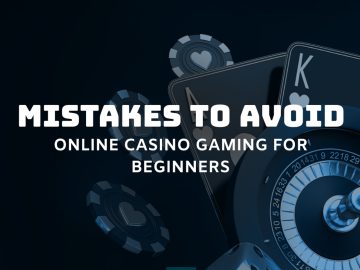Making money from YouTube used to be as simple as uploading great content, garnering millions of views, and earning a share of advertising revenue. Now, content creators have access to multiple ways to monetize their content. In addition to advertising, this can include corporate sponsorships from a major brand, fan funding, or merchandise sales.
Key Takeaways
- Content creators can join the YouTube Partner program after accumulating 1,000 subscribers and 4,000 hours of watch time.
- This gives creators access to monetization features such as advertising, fan funding, and merchandise sales.
- Top YouTube stars make close to $55 million a year; however, most make far less or nothing at all.
Google Ads
The first step to making money on YouTube is to join the YouTube Partner program. Partnership gives content creators access to special tools, such as the ability to monetize their videos via Google Adsense. To qualify, content creators must have at least 1,000 subscribers and 4,000 hours of accumulated watch time over the prior 12-month period.
YouTube monetizes videos via pre-roll, display, and other advertising formats. Advertisers pay based on clicks and impressions. YouTube gives the content creator 55% of this revenue and takes 45% for itself.
Content creators must adhere to advertising guidelines. Content that contains foul language, adult content, violence, and other subjects will not have ads placed against them. This can include discussion of sensitive news events.
Brand Sponsorship
One lucrative form of advertising is brand sponsorship, also known in the digital marketing world as “influencer marketing.” A company will pay a content creator to promote a brand or product within a video. For example, early in her YouTube career, Michelle Phan drew the attention of cosmetics brand Lancôme with her popular make-up tutorials.
There are many agencies that help match brands with social media influencers on platforms such as YouTube, Facebook, Instagram, Snapchat, and X platform (formerly Twitter).
Fan Funding
Another popular way to monetize a channel is through channel memberships. Fans and followers make recurring monthly payments in exchange for bonus content such as badges, emojis, special videos, live chats, and other content.
YouTube partners who have reached 1,000 subscribers can enable this monetization feature on their accounts. Third-party services such as Patreon also help video creators to monetize their fan base via monthly memberships. Top video creators earn as much as $95,000 per month from fan support.
Merchandise Sales
YouTube partners also have the ability to sell up to 12 items of merchandise to their audience by enabling this feature in their accounts. Ryan Kaji has made millions playing with toys.
YouTube Best Practices
To increase their chance of attracting a large follower base, creators should follow established YouTube best practices. One of the most fundamental best practices is to create rich, engaging content. Viewers come to YouTube looking to either be entertained or for a solution to a problem they face. By creating great content, it’s more likely the video gets viewed and shared.
The more engagement a video receives, the more valuable it is to YouTube, increasing the chances it will rank higher within the search results.
Another way to increase viewership is for content creators to optimize their videos for YouTube searches. This includes using the Google keyword planner to find words that a large number of people search for and to include those keywords within the description and tags of the YouTube video page. Promoting the YouTube video through the use of social media and paid media advertising is another popular way to generate additional traffic to the video.
Revenue Generation Challenges
Even when all these best practices are followed, there are some revenue generation challenges that YouTube video creators face. The median cost per thousand (CPM) ad rate charged to advertisers is between $5 and $20. Because creators are paid only on monetized views, and not total views, the effective CPM they earn can be far lower.
How Many Views Do You Need on YouTube to Make Money?
To make money on YouTube, you need 1,000 subscribers and 4,000 watched hours in the previous year, or 1,000 subscribers and 10 million Shorts views in the previous 90 days. If you have achieved either, you are eligible to apply to YouTube’s Partner Program and monetize your content.
How Much Will YouTube Pay Me for 1,000 Views?
The amount that YouTube will pay you for 1,000 views will vary depending on the advertiser, but the amount ranges between $0.10 to $0.30 per view with an average of $0.18.
How Can You Make $10,000 a Month on YouTube Without Making Videos?
There are various ways to make money on YouTube without making videos, the primary being audio sounds, such as meditation sounds, ASMR (autonomous sensory meridian response) triggering sounds that don’t include visuals, creating sound effects, streaming video games, making tutorials, and having a podcast.
The Bottom Line
Despite these challenges, people who are able to attract a large and loyal following can make a substantial income on YouTube. According to Forbes, the highest-paid YouTube video creators are pulling in close to $54 million a year, so it’s easy to see why many chase this seemingly bottomless well of income.




